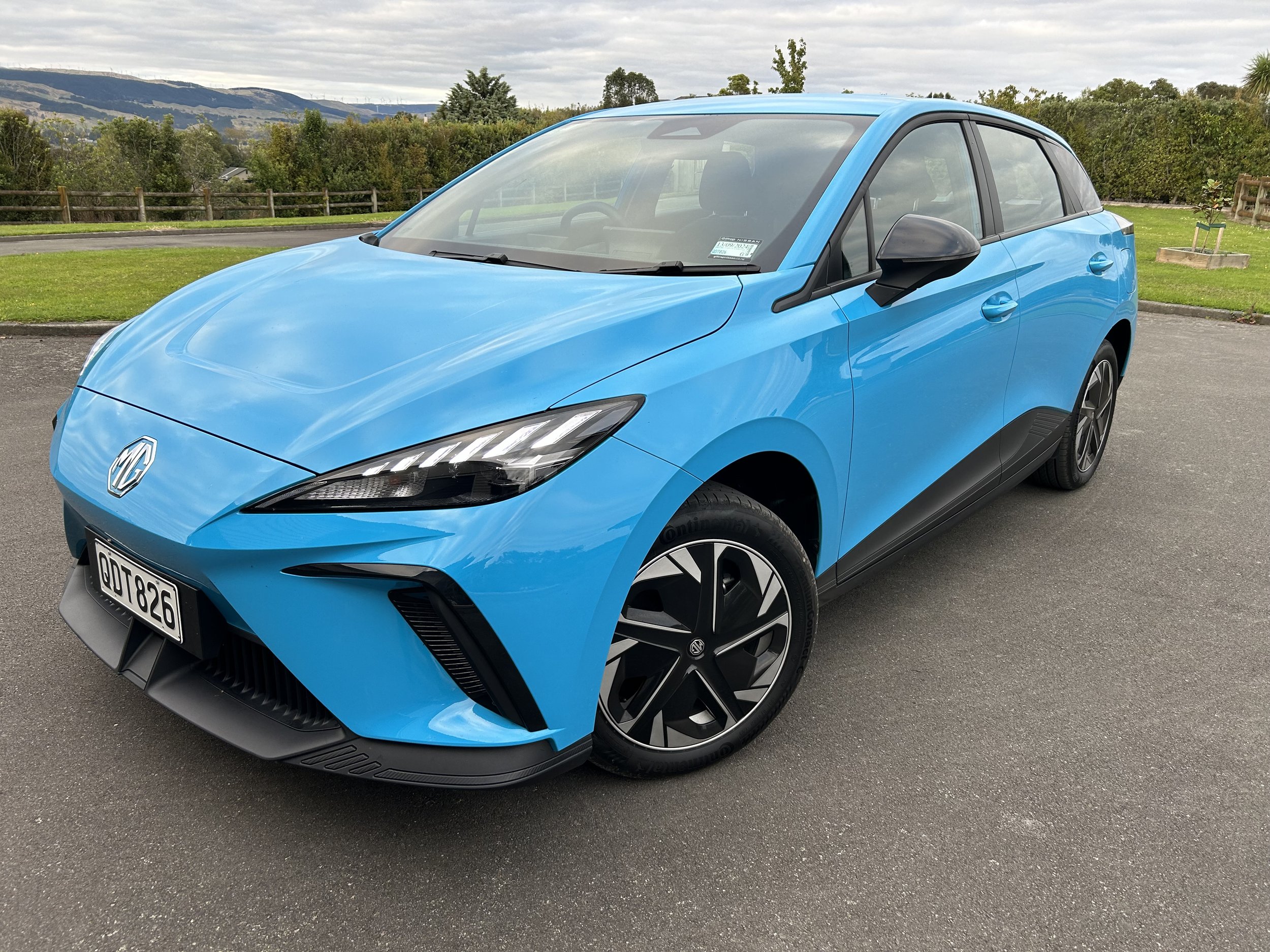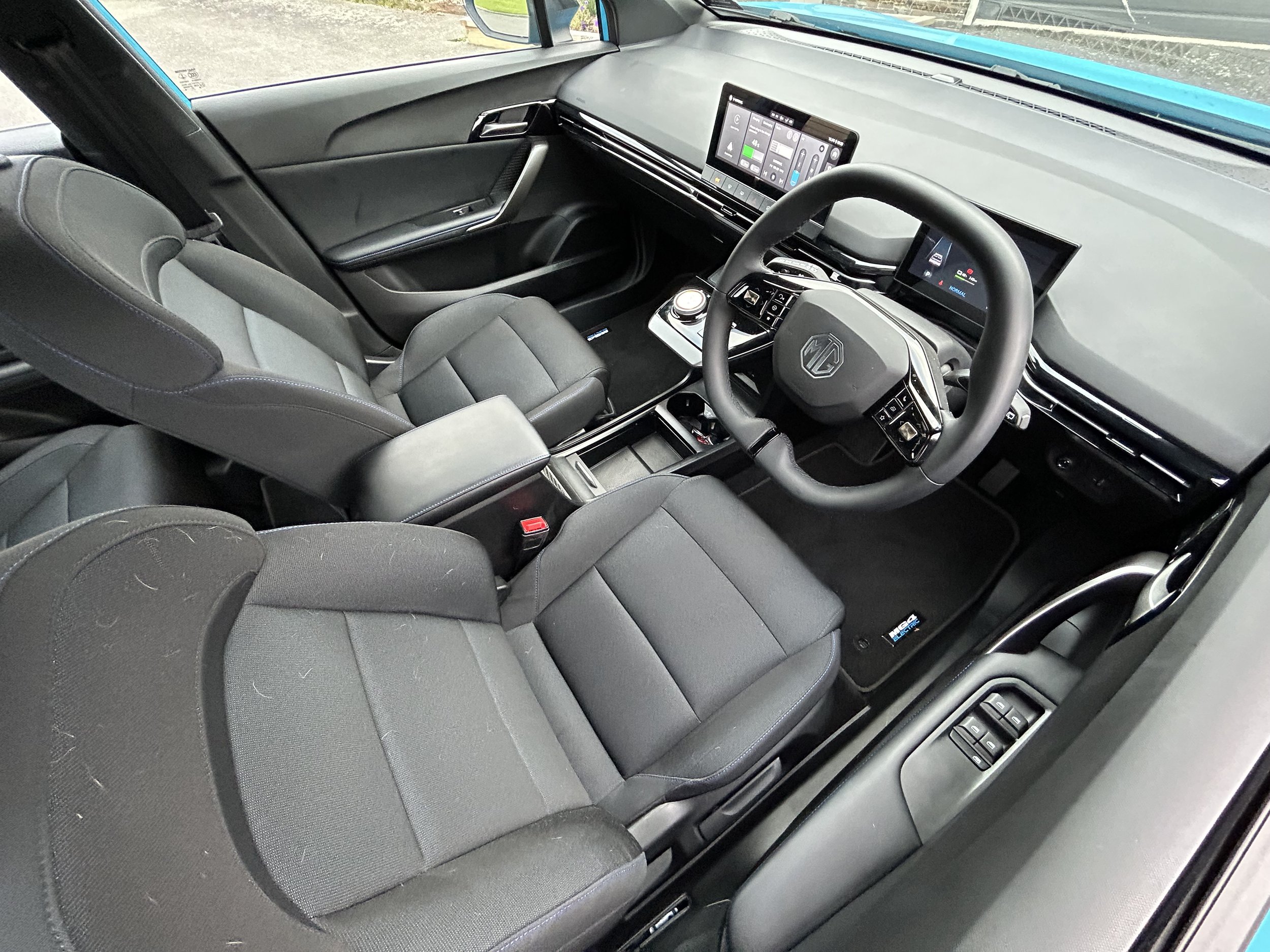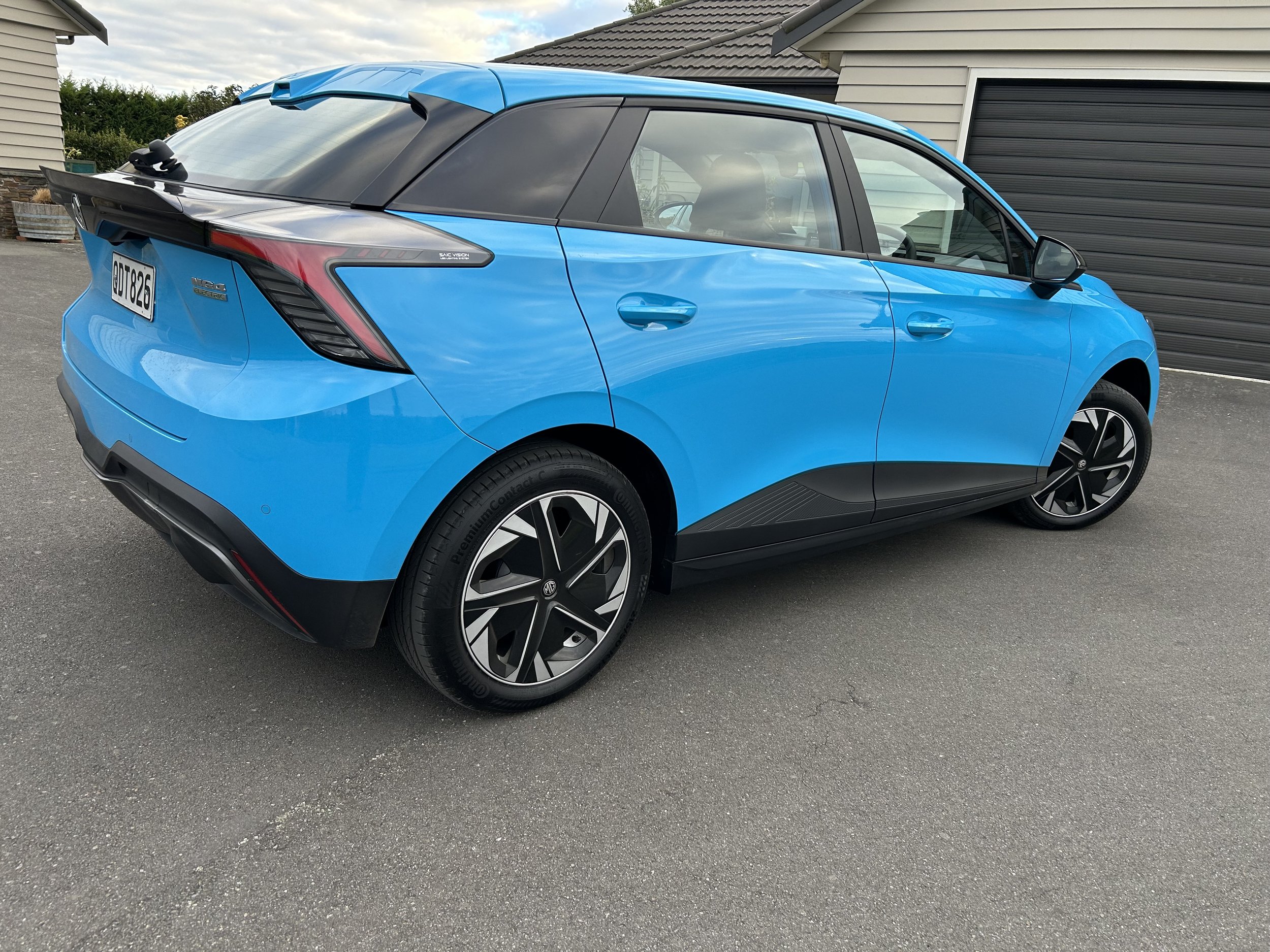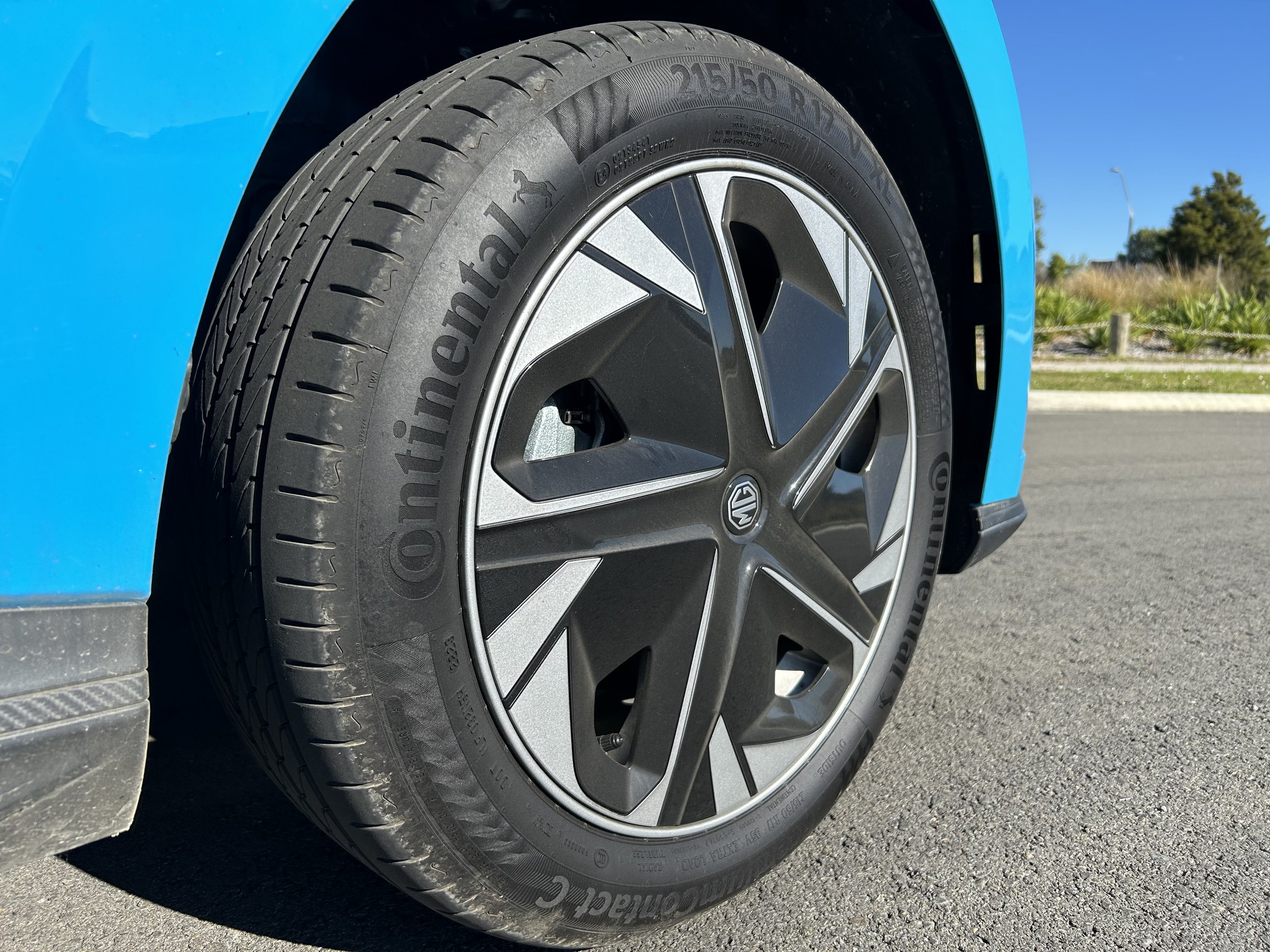MG4 Excite 51 road test review: Does the budget choice play a value card?
/It’s the cheapest version of China’s best compact electric; so, case closed, right?
ELECTRIC vehicle buying has slowed considerably; the question now is: How much effort will the big players put into rekindling the public desire?
Chinese brands seem well positioned to start a new fire. China is easily the world’s single largest EV market and even in this time of global EV sales slowdown, brands there have maintained an astounding ‘lowest-sticker-wins’ pricing war.
Should the parent operations export that same determination to their various national distributors around the world … well, who knows how much lower they might be able to go?
This an interesting time to consider the MG4 derivative that roughly this time last year was our cheapest new electric.
That strong ‘value’ message for the MG4 Excite was clearly useful then, but times are clearly far more challenging now.
As of May 1, just 44 had been registered year to date. That’s not MG4 Excites, but 44 MG4s in total. Over four months. When the market was healthy, that count could have come from a quiet fortnight.
From a consumer point of view, price sharpening is good news and all MG4s are subject to discount. But by Chinese standards, we’re a long way from a price war. Realistically, we’re still at stage of skirmishing.
In broader assessment, the question about whether this edition is better spending than those above is not easily reconciled. With MG4, the whole ‘how much car do you really need?’ issue is challenging because, setting aside the obviously specialist XPower, the Excite is cheapest of four editions that are all reasonably closely positioned for price yet, other than each delivering common 250Nm torque, site as quite disparate choices.
The Excite achieves favourable placement through offering a smaller battery and less zest than the others. For all that, its 51kWh lithium-ion battery, output of 120kW power and estimated optimal range of 350 kilometres, would outwardly maintain as the favourite for the average driver whose regime prioritises urban-oriented use.
What also logically assists the least expensive version is that it presents as strongly as an excellent, well-resolved electric-dedicated effort as any other variant. Designing and engineering a car around a battery, which in this instance sits low in the middle, makes massive difference to the end product.
The pluses lend to more than just maximum practicality and roadholding. It also allows for fantastic styling freedom.
Incredible to think this design has been around, internationally, for two years - it still looks fresh and, when measured against newer cars from its birthplace, still seems better resolved. Not everyone seems happy with those angular lines and sharp edges, yet I’d argue they characterise the car, and also offer a pleasingly ‘international’ ambience.
The clean sheet approach also has positive influence on the interior. While that’s not to say it necessarily competes equally to Europe’s best when it comes to material qualities, it still nonetheless throws down a gauntlet to other Chinese makes in its fit, finish and presentation.
The cabin delivers more space than you’d expect from this size of car. Perhaps there’s some justification to suggest legroom in the back comes at the expense of boot space behind, there's more than enough space for two adults in the back seats. Also the boot isn’t as shallow as it appears, as there's a handy false floor under which you can stow the charging cables and other paraphernalia.
The instrumentation is as avant garde as you would hope for; going electric lends opportunity to bring control systems into a new age, too.
Here there’s a tiny nub for a Drive selector and an almost button-free design. Everything centres around a large 10.25-inch touchscreen, that's joined by a smaller digital instrument display and a rotary drive selector, as well as a selection of buttons on the steering wheel. Modern? It couldn’t be more so.
But is it perfect? Last experience has been that the touchscreen isn’t. Hope was that because the Excite’s isn’t as loaded as it is in the more expensive types, it might be less prone to the bugs found in others.
Not so. The pluses are that it delivers intuitive menus, as well as sharp graphics and a relatively smart design. The challenge is that the prompt responses are not always that crisp, so if you attempt to hurry it - one example being to rush through radio station selections - it can get hamstrung.
The digital instrument display ahead of the driver is great. The steering wheel controls that involve in its function less so. They are also not as fully resolved as they could be. The two thumb sticks on the wheel have different functions depending on which buttons you press. You’ll likely get used to these, but initially it makes controlling the various screens and systems more confusing than it should be.
Given the low price, it’s great that the Excite nonetheless still tailors with climate control, has rear parking sensors and comes with the kind of driver aids modern car buyers expect, built around the MG Pilot assistance technology. This includes the usual lane-keeping interventions, automatic emergency braking, adaptive cruise control to maintain a fixed distance to the car ahead no matter how much its speed fluctuates and more besides.
For all that, unavoidably there’s been some cost-cutting to get it into this price band.
In respect to the wheels, you can disguise the impact of this simply by removing the plastic ‘aero’ wheel trims as they attach to some decent looking alloys.
Within the cabin, the challenge is tougher. Basically the kit-out here’s akin to what you would expect from a value-minded mid-$20,000 ICE car, except that because it has to account for the premium that unavoidably comes with battery, it’s still almost twice that spend.
Flimsy plastics and sharp edges in various bits of the cabin are not just an Excite blight; all MG4s suffer this. Trimming th seats in cloth that will hopefully be hard-wearing is expected. Front chairs that seem to look like those in the pricier types, yet haven’t the same adjustments or overall comfort, is a less welcome discovery. For this tall driver, they’re just plain uncomfortable.
We’ve already ticked off that some plastics feel cheap. Turn on the audio and you’ll find that while the stereo speaker adjustment shows ability to shift sound from front to rear, it won’t go beyond the halfway point … because it lacks rear speakers. That seems a bit mean and becomes an annoyance, because this version seems to let in more road noise than the others, so you have to run the volume quite high to compensate for that.
Will potential buyers mind any of that given the affordable route to owning an electric car it provides? Time on test enforced there’s low cost to running an EV, providing you’re sensible about it.
Even high-cost electric is cheaper than petrol, but the key to keeping the spend down is not eating out; EV public chargers are great, but they charge restaurant prices. Home replenishment, especially when taking full advantage of a suitable off-peak tariff, can bring substantial saving.
That’s important with a battery of this size. Time on test suggested the range in real-world terms is competitive, rather than spectacular. The trick with all EVs is to keep the battery pepped, rather than run a full to near empty cycle, but doing it quite often probably makes more sense here.
If you’re clocking around 40-60kms daily, and that mileage is mainly from tootling around the streets but with a bit of open road also including, then hooking it up to home power for a few hours trickle charge replenishment every second day proved prudent. If you go further, more often, then you’d be better off getting a more robust home system or expect to spend 30-60 minutes at a public charger.
One plus of the smaller battery is that it’s a LFP (Lithium Iron Phosphate) cathode chemistry which is said to be better for prolonged battery health.one totally fine for frequent fast charging to 100 percent without risk of degradation while also provisioning a reasonably nippy max DC charge rate of 88kW, which means it takes around 40 mins for a 10-80 percent charge. It’s quite a bit tardier off the three-pin plug, but an overnight should at least provide 200-250kms, which is good enough to be getting on with.
Like many electric cars you can adjust how much regenerative braking you get when you lift off the throttle, ranging from minimum for cruising to maximum for city driving and putting as much energy back into the battery as possible in stop-start traffic. A pity this is all buried in the fiddly menus.
Performance-wise, the entry car is just as peppy in start off s the other rear-drives - if you want real get up and go wallop, try the XPower - and at open road speed it seems fine, too.
Being on the smallest, narrowest tyres is fine for the dry, but if the surface is greasy, expect less grip. Judicious throttle sensitivity is useful, else the rear drive wheels even in 'normal' mode, which is less responsive than ‘sport', might momentarily spin. The fronts can also entertain a touch of understeer. It’s nothing really dramatic, as the on-board safety systems step in before things get too out of hand. Overall, though, the car feels nippy and involved.
Those who express dismissiveness about electrics lacking character need spend time with an MG4. With the batteries under the floor, the centre of gravity is as low as possible, and it shows in the handling. The body leans a little bit in corners, but the steering doesn't feel too light. It’s truly fun to drive.
Horribly rigid ride quality can be a bugbear of many EVs, but the MG tuning is decent, with reasonable suppleness at open road pace and while low-speed ride is less cosseting, yet even then it's still above immediate rivals. For a car that isn't exactly light on its feet, it does well.
Conceivably, if you’re mainly a homebody and drive truly long distances only occasionally, the 51kW version is going to be a reasonable choice. You get the same modern styling as the pricier types and safety fundamentals are also tended to. MG giving it better audio and sorting the front seats would be welcomed.
So is it good value? Such an irksome querstion. I’d say this: When Clean Car Discount was in place, this car just touched into the perceived nirvana of sub-$40k pricing. As competent as it is, perhaps it needs to return there by other means.
As to the bigger picture? The massive cost advantages that China’s EV industry has over foreign competitors is beginning to be understood. Experts say squeezing costs from every stage of production, from raw materials, to batteries, to land, and labour is part of the methodology. On top of that, there’s the extraordinary amount of help — both direct and indirect — Chinese manufacturers get from their government.
Competitiveness in China is such that, as website Cleantechnica put it, “manufacturing electric cars in China is like participating in a circular firing squad.”
How long before NZ starts to hear serious gunfire?



















